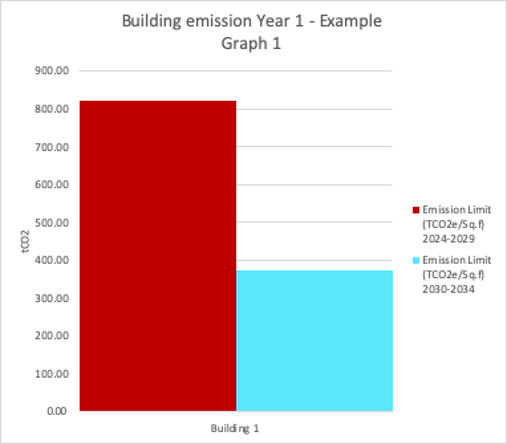A Step-by-Step Guide to NYC’s Buildings Emissions Law (LL 97)
In the past few months, we have had many questions from customers and colleagues about NYC’s Buildings Emissions Law (LL97). In keeping with our commitment to transparency, we have created a series of articles that are meant to shed light on the law: what does the law attempt to do, what is your exposure, how can you best navigate the requirements of the law? This article is the first in a 3-part series. The Megawatt Hour will be publishing a series of articles that will answer some of the questions that arise : (i) what information do I need to have ready for LL97? (ii) how do I calculate my exposure? (iii) how much does it cost for me to comply?
By: Jaifa M. Mezher Arango
M.S. in Global Affairs Candidate (2020)
NYU Center for Global Affairs
Energy/Environmental Policy
Building Emissions Law: Background
With local law 97, or the “Building Emissions Law”, carbon management in New York City becomes imperative. In New York City, buildings are the biggest source of greenhouse gas emissions. Thus, City buildings are the target of this policy. The goal of the legislation is to achieve a greenhouse gas emission reduction of 40% by 2030 and of 80% by calendar year 2050. Even the existence of LL 97 indicates that there is a strong belief among local legislators that when it comes to reducing carbon emissions, solutions must occur at the local level. The law as it is written acknowledges that building owners and tenants can manage carbon emissions from either the supply or the demand side.

LL97 proposes emission limits based on a building’s occupancy group, or groups (i.e. the type of entity or entities that occupy the building). The law establishes two limit periods: 2024 to 2029 and 2030 to 2034. Building emissions are evaluated and measured separately for each period. The emissions limits will be measured in tCO2e (or tonnes of carbon dioxide equivalent, which is a measure that allows you to compare the emissions greenhouse gases relative to one unit of CO2). For example, if your building is in Occupancy Group E (education), you will be assigned a limit of 0.00758 tCO2e per square foot for 2024 until 2029. The limit will change for the next period (2030-2034) to 0.00344 tCO2e per square foot.
Keeping track of a buildings energy consumption will be key to complying with the law. Now, more than ever, building owners and tenants will need to be able to to forecast and plan to ensure that you are capable of complying with the law.
A call for keeping calm
A study by the Urban Green Council says that only 20% of the buildings in the city will be out of compliance with LL97 in the first limit period, from 2024 until 2029. This gives buildings plenty of time to prepare for LL97. As we note, below, the MWh’s initial analysis suggests that most NYC buildings will be in a position to comply with the first period limits. Buildings with significant cogeneration facilities may be an exception to this rule. The second period will present more of a compliance challenge for Tenants and Owners.
What information do I need to prepare for LL97?
To quote New Kids on the Block, “Step by Step”….and the first step here, is to start gathering information.
May 1st of 2024 will be the first deadline for building owners to submit their building assessment to NY City’s Office of Building Energy and Emissions Performance (which has yet to be formed). In order to evaluate your exposure, you will need to gather and evaluate the following information:
- The name of your building;
- The address with postal code, municipality, city, state;
- Information about the year your building was built;
- The gross floor area in square feet (LL97 applies for buildings over 25,000 sq. ft.);
- Your building’s occupancy group (note that buildings may have more than one occupancy group);
- Meter, meter number, type of meter (e. electricity or natural gas);
- Source of electricity and type of fuel used;
- Source of heat and type of fuel used;
- If your building buys Renewable Energy Credits in Zone J, or if it buys Greenhouse Gas Offsets as required by NYISO, or what changes or upgrades have your building gone through in the past years which may affect (for better or for worse) their energy consumption.
There are different sources of this data. However, most of it can be found by using the Building Information Search Tool HERE.
Building owners will measure and monitor emissions by converting fuel consumption (kWh of electricity, therms of natural gas, gallons of fuel oil, etc.) into a measure of carbon dioxide known as tCO2 (tonnes of carbon dioxide equivalent).
What is your building’s exposure?
Once you have the gross floor area and your occupancy group, then you will be able to understand your facility’s exposure (in tCO2e) for the two periods established by LL97 (2024-2029 and 2030-2034) (see Graph 1). The information from your meter, the type of meter and the energy source will be useful for calculating your energy consumption.

We used sample data for the information that appears in Graph 2. As you can see from this graph, this sample building will be below the limit for the first period (2024-2029). However, the building will need to put additional measures in place to prepare and comply with building emission limits during the second period (2030-2034). MWh’s initial analysis suggests that most NYC buildings will be in a position to comply with the first period limits. Buildings with significant cogeneration facilities may be an exception to this rule. The second period will present more of a compliance challenge for Tenants and Owners.

Hence the next question: How much does it cost for the building to comply?
In the event that your building is out of compliance, particularly for the second period, you have options.
The options you, as Tenant or as the Owner of a Building, can play with will be:
- Buy clean energy;
- Become more energy efficient.
- Update or improve the way in which you consume energy by using clean distributed energy resources;
- Pay the penalties;
- Buy renewable energy credits (RECs);
- Buy greenhouse gas offsets.
Bottom line for customers: Don’t be scared!!! We got you!!
If you have already been planning, forecasting and budgeting your energy, you are probably on the right track. You may even know now where you stand with regards to LL97. In the next series of articles, we will help to explain how to analyze the cost of compliance and how best to mitigate your exposure.
 Jaifa M. Mezher Arango is a policy and product development intern at The Megawatt Hour. She has worked in International Cooperation and Sustainable Development for the last 10 years. At the moment, the focus of her research is on the geopolitics of energy and the impact natural gas has on developing markets. In addition, Jaifa is working on energy efficiency, clean energy, and the impact LL97 will have in NY City and in the State. Jaifa is from Colombia. She holds a B.A. in Government and International Relations from Universidad Externado de Colombia and is a Candidate for the M.S. in Global Affairs from NYU (expected May 2020).
Jaifa M. Mezher Arango is a policy and product development intern at The Megawatt Hour. She has worked in International Cooperation and Sustainable Development for the last 10 years. At the moment, the focus of her research is on the geopolitics of energy and the impact natural gas has on developing markets. In addition, Jaifa is working on energy efficiency, clean energy, and the impact LL97 will have in NY City and in the State. Jaifa is from Colombia. She holds a B.A. in Government and International Relations from Universidad Externado de Colombia and is a Candidate for the M.S. in Global Affairs from NYU (expected May 2020).
